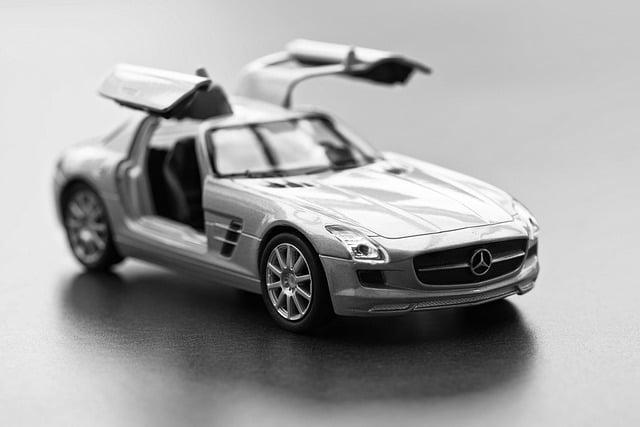Max, a playful golden retriever, loved his squeaky toy more than anything. But after months of enthusiastic chewing, it became a frayed, unrecognizable mess. One day, Max’s owner noticed him struggling to play, and a vet visit revealed that worn toys can harbor harmful bacteria and pose choking hazards. To keep Max safe and happy, she learned that replacing dog toys every few months is essential. Investing in fresh, safe toys not only protects your furry friend but also keeps their playtime exciting. Don’t wait—ensure your dog’s health and happiness today!
Contents
- Understanding the Lifespan of Dog Toys for Optimal Safety
- Identifying Signs That Indicate Its Time for a Replacement
- Choosing the Right Materials for Durability and Health
- Establishing a Regular Replacement Schedule for Your Dogs Toys
- Q&A
Understanding the Lifespan of Dog Toys for Optimal Safety
When it comes to your furry friend’s safety, understanding the lifespan of dog toys is crucial. Over time, toys can wear down, leading to potential hazards such as choking or ingestion of small parts. Regularly inspecting your dog’s toys for signs of wear and tear is essential. Look for:
- Fraying edges that could pose a choking risk.
- Cracks or breaks in hard toys that may splinter.
- Loose parts that could be chewed off and swallowed.
Different materials have varying lifespans, and knowing which toys are made from durable materials can help you make informed choices. For instance, rubber toys tend to last longer than plush ones, making them a better option for aggressive chewers. However, even the sturdiest toys will eventually succumb to your dog’s relentless chewing. Therefore, it’s wise to establish a routine for replacing toys based on their material and your dog’s chewing habits.
Another factor to consider is the frequency of play. If your dog plays with a specific toy daily, it will wear out much faster than one that is used occasionally. Keeping track of your dog’s favorite toys and their condition can help you determine when it’s time for a replacement. A good rule of thumb is to replace toys every few months, but be vigilant and proactive in assessing their condition regularly.
Ultimately, prioritizing your dog’s safety means being attentive to the state of their toys. Investing in high-quality, durable toys can extend their lifespan, but regular replacements are still necessary. By staying informed and proactive, you can ensure that your dog enjoys safe and engaging playtime, reducing the risk of accidents and enhancing their overall well-being.
Identifying Signs That Indicate Its Time for a Replacement
When it comes to your furry friend’s toys, vigilance is key. Over time, even the sturdiest toys can show signs of wear and tear that may not be immediately obvious. One of the first indicators that a toy may need replacing is visible damage. Look for **frayed edges**, **cracks**, or **missing pieces**. If you notice any of these signs, it’s crucial to act quickly, as damaged toys can pose a choking hazard or lead to ingestion of harmful materials.
Another important factor to consider is the toy’s ability to engage your dog. If your pet has lost interest in a particular toy, it may be time to retire it. Toys that no longer stimulate your dog’s curiosity or encourage play can lead to boredom and destructive behavior. A lack of engagement can also indicate that the toy has lost its appeal, whether due to wear or simply because it’s no longer challenging enough for your pup.
Additionally, pay attention to any changes in your dog’s behavior when playing with their toys. If you notice signs of discomfort, such as **whining**, **growling**, or **hesitation**, it could be a signal that the toy is no longer safe or enjoyable. Dogs can be quite sensitive, and a toy that once brought joy may now be causing anxiety or discomfort. Always prioritize your dog’s emotional well-being alongside their physical safety.
Lastly, consider the material of the toy. Many toys are made from materials that can degrade over time, especially with frequent use. If you find that a toy is starting to smell, feel sticky, or has developed a strange texture, it’s likely time for a replacement. **Hygiene** is essential for your dog’s health, and old toys can harbor bacteria and germs that could lead to illness. Regularly assess your dog’s toy collection to ensure they are safe, engaging, and clean.
Choosing the Right Materials for Durability and Health
When selecting dog toys, it’s crucial to prioritize materials that ensure both durability and the health of your furry friend. **Natural rubber** is an excellent choice, as it is not only tough and long-lasting but also free from harmful chemicals. This material can withstand vigorous chewing, making it ideal for aggressive chewers while being gentle on your dog’s teeth and gums.
Another option to consider is **nylon**, which is known for its strength and resilience. Nylon toys can endure the test of time, providing endless entertainment for your pet. However, it’s essential to monitor your dog while they play with nylon toys, as excessive chewing can lead to small pieces breaking off. Always choose high-quality nylon products that are specifically designed for dogs to minimize any health risks.
For those who prefer a softer touch, **organic cotton** toys are a fantastic alternative. These toys are not only durable but also safe for your dog to chew on. They are often made without harmful dyes or chemicals, ensuring that your pet is not exposed to any toxic substances. Additionally, organic cotton is biodegradable, making it an environmentally friendly choice that aligns with a sustainable lifestyle.
Lastly, consider **non-toxic, durable fabrics** for plush toys. Look for options that are reinforced and designed for heavy use. These toys can provide comfort and companionship while still being robust enough to withstand your dog’s playful antics. Always check for certifications or labels that indicate the toy is free from harmful substances, ensuring that your dog can enjoy their toys safely and healthily.
Establishing a Regular Replacement Schedule for Your Dogs Toys
Establishing a regular replacement schedule for your dog’s toys is essential for maintaining their health and happiness. Over time, toys can wear down, leading to potential hazards such as choking or ingestion of harmful materials. By proactively replacing toys, you not only ensure your dog’s safety but also keep their playtime engaging and stimulating. A well-planned schedule can help you stay on top of this important aspect of pet care.
Consider implementing a **monthly inspection** routine for your dog’s toys. During this inspection, look for signs of wear and tear, such as frayed edges, broken pieces, or any signs of damage. If a toy no longer meets safety standards, it should be replaced immediately. This proactive approach not only protects your furry friend but also encourages you to stay mindful of their play environment.
In addition to regular inspections, it’s beneficial to rotate your dog’s toys. By having a selection of toys and introducing new ones periodically, you can keep your dog mentally stimulated and excited about playtime. Aim to replace or rotate toys every **three to six months**, depending on the durability of the materials and your dog’s chewing habits. This strategy not only prolongs the life of the toys but also keeps your dog engaged and prevents boredom.
Lastly, consider your dog’s age, size, and play style when determining the frequency of toy replacements. Puppies may require more frequent updates due to their aggressive chewing, while older dogs might be gentler with their toys. Tailoring your replacement schedule to your dog’s specific needs ensures they have safe, enjoyable, and appropriate toys at all times. Remember, a happy dog is a healthy dog, and keeping their toys fresh is a key part of that equation.
Q&A
-
How often should I replace my dog’s toys?
It’s recommended to replace your dog’s toys every 3 to 6 months, depending on their condition and your dog’s chewing habits. Regularly assessing the toys ensures your pet’s safety and enjoyment.
-
What signs indicate that a toy needs to be replaced?
Look for signs such as visible wear and tear, loose parts, or any pieces that can be swallowed. If a toy is damaged or poses a choking hazard, it should be replaced immediately.
-
Are some toys more durable than others?
Yes, some toys are specifically designed for heavy chewers and are made from tougher materials. Investing in high-quality, durable toys can extend their lifespan and reduce the frequency of replacements.
-
Can I repair dog toys instead of replacing them?
While minor repairs can be made, it’s crucial to ensure that the toy remains safe for your dog. If a toy has been significantly damaged, it’s best to replace it rather than risk your pet’s safety.
regularly replacing your dog’s toys is essential for their health and happiness. By investing in new, safe toys, you not only keep playtime engaging but also protect your furry friend from potential hazards. Prioritize their well-being today!

大家好,我是彼得潘,專業的手法身體治療師。我喜歡探索和研究各種主題,並透過與人工智慧的合作分享專業、實用、有趣的文章。我們定期進行人工審核,以確保內容的準確性。如果您發現文章中有任何不準確的地方,請隨時與我們聯繫,我們會及時糾正。您可以透過 [email protected] 與我們聯繫。



